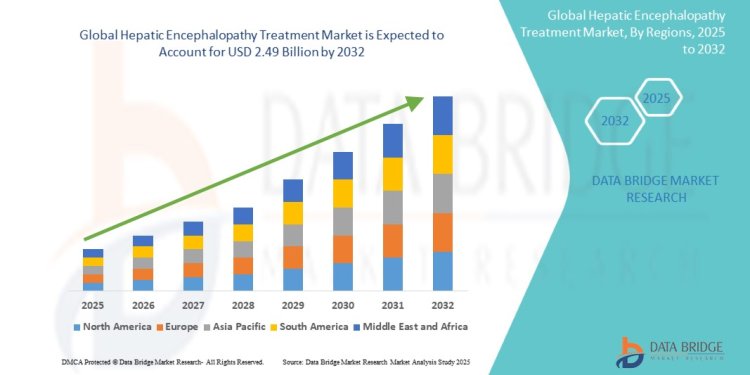Hepatic Encephalopathy Treatment Market: Trends, Growth Drivers, and Future Outlook
The Hepatic Encephalopathy Treatment Market was USD 1.64 billion and is expected to reach USD 2.49 billion, growing at a CAGR of 5.80% by 2032

Introduction
The Hepatic Encephalopathy (HE) is a severe neuropsychiatric disorder caused by liver dysfunction, leading to the accumulation of toxins in the bloodstream. The condition is commonly associated with cirrhosis and can significantly impact cognitive function, behavior, and motor skills. The global hepatic encephalopathy treatment market is expanding due to the rising prevalence of liver diseases, increased awareness, and advancements in treatment options.
Market Growth Drivers
-
Rising Incidence of Liver Diseases
-
The growing prevalence of liver cirrhosis and chronic liver diseases is a major driver for the HE treatment market. Factors such as alcohol abuse, hepatitis infections, and metabolic disorders contribute to the rising cases of hepatic encephalopathy.
-
-
Advancements in Treatment Options
-
Ongoing research and the introduction of novel therapies, including new drug formulations and targeted therapies, are fueling market growth. Rifaximin and lactulose remain the most commonly prescribed treatments, with continuous improvements enhancing their efficacy.
-
-
Increasing Healthcare Expenditure
-
Governments and private healthcare providers are investing significantly in liver disease treatment and management, leading to improved accessibility and affordability of hepatic encephalopathy treatments.
-
-
Rising Awareness and Early Diagnosis
-
Efforts by healthcare organizations and non-profit groups to spread awareness about hepatic encephalopathy and its early symptoms are contributing to increased diagnosis and treatment rates.
-
Market Challenges
-
High Treatment Costs: The cost of long-term HE treatment, including hospitalization and medication, remains a concern, especially in developing economies.
-
Side Effects of Medications: Drugs like lactulose and rifaximin, though effective, may cause side effects such as diarrhea, bloating, and discomfort, affecting patient compliance.
-
Limited Availability of Specialized Treatment: In certain regions, access to specialized treatment and hepatology experts is limited, hampering market growth.
Regional Insights
-
North America: Leading market due to high healthcare expenditure, robust R&D activities, and an increasing burden of liver diseases.
-
Europe: Significant growth driven by an aging population and high awareness about liver health.
-
Asia-Pacific: Expected to witness rapid growth due to improving healthcare infrastructure and rising cases of liver-related disorders.
-
Latin America & Middle East & Africa: Gradual growth attributed to increasing healthcare investments and awareness programs.
Future Outlook
The hepatic encephalopathy treatment market is expected to grow steadily, driven by increasing research initiatives, emerging biologics, and the rising burden of liver diseases. The development of innovative drug delivery systems and combination therapies is anticipated to enhance treatment efficacy and patient outcomes. Additionally, collaborations between pharmaceutical companies and research institutions are likely to accelerate the discovery of breakthrough treatments.
Conclusion
The hepatic encephalopathy treatment market is witnessing steady growth due to the increasing prevalence of liver diseases and advancements in therapeutic options. While challenges such as treatment costs and side effects persist, ongoing research and government initiatives are expected to address these concerns, paving the way for a more effective and accessible healthcare landscape.
Get More Details : https://www.databridgemarketresearch.com/reports/global-hepatic-encephalopathy-treatment-market
What's Your Reaction?



















